Your Call
When I do these catching up blog posts to maximize learning, folks are often reluctant to comment on which of the images is best. Please, therefor, leave a comment letting us know which of the six images below you like best. And why you made your choice. Think of it as a photo contest 🙂 Please note that today’s Image #s are different from the Image #s used in the original posts. Note also that there is one brand new image.
BIRDS AS ART Office Phone Out!
A tree fell on our phone lines while I was in Deland. 863-692-0906 is currently down. If you need to get in touch with Jim or with me, please try my cell at 863-221-2372. If I do not pick up, please shoot us a text.
What’s Up?
I head for the Auto Train this coming Sunday and Long Island on Monday. All my camera batteries are charged, and I will finish packing the photo gear this morning.
With nine deposit checks in hand, and with good friend Ed Dow grabbing a single cabin, there are only three openings left on the 2023 Galapagos Photo-cruise of a Lifetime. The trip is now a go. If you have any interest in joining us, it would be best to get in touch via e-mail ASAP.
I was glad to learn that San Diego IPT veteran and good friend Carolyn Johnson signed up for the first Homer Bald Eagle IPT. She has a big Africa trip coming up in a few weeks. I advised her on Thursday that making a big trip with a single camera body would be a risky endeavor. So, on Friday, she purchased a second Sony A1 from Bedfords. Thanks, CJ! Speaking of Homer, I am looking for someone to do all three Homer Bald Eagle trips and driving the round trip from Anchorage to Homer and back with me. Toward that end, I am offering a ridiculously high discount of $1500 off each trip. That works out to $13,000 for all three trips, a hefty $4500.00 discount. This offer may not last long because there are only two slots left on the second IPT. If you are interested, or would like additional details, please contact me via e-mail
For the first time in weeks, it did not rain here on Wednesday. Today is Thursday 28 July 2022 and I still have lots to do. Wherever you are and whatever you are doing, I hope that you too have a great day. This blog post took about 90 minutes to prepare and makes one hundred twenty-six days in a row with a new one.
Please remember to use the B&H and Amazon links that are found on most blog pages and to use the BIRDSASART discount code at checkout when purchasing your new gear from Bedfords to get 3% back on your credit card and enjoy free second-day air FedEx. Please, also, consider joining a BAA IPT. You will be amazed at how much you will learn!
The First DeSoto IPT
If you are interested in the first DeSoto IPT, 3 1/2 Days, Tuesday 27 September through the morning session on Friday 30 September 2022, know that I just reserved a three-bedroom AirBnB in Gulfport. Share it for four nights with many multiple IPT veteran Monte Brown and me and save a ton on lodging: $83.69/night/person for a whole home. AirBnB photos available upon request. If interested, shoot me an e-mail.
Follow me on Instagram here. I am trying to feature both new and old images, especially images that have not appeared recently on the blog. Or search for birds_as_art.
BIRDS AS ART Image Optimization Service (BAA IOS)
Send a PayPal for $62.00 to birdsasart@verizon.net or call Jim at 863-692-0906 and put $62.00 on your credit card. Pick one of your best images and upload the raw file using a large file sending service like Hightail or DropBox and then send me the link via e-mail. I will download and save your raw file, evaluate the exposure and sharpness, and optimize the image as if it were my own after converting the raw file in Adobe Camera Raw. Best of all, I will make a screen recording of the entire process and send you a link to the video to download, save and study.
Induro GIT 304L Price Drop
Amazingly, we have two, brand-new-in-the-box Induro GIT 304L tripods in stock. They are $699.00 each (were $799.00) and the price now includes the insured ground shipping to the lower 48 states. Weekday phone orders only: 863-692-0906. Order yours here while they last.
Please Remember
You can find some great photo accessories (and necessities, like surf booties!) on Amazon by clicking on the Stuff tab on the orange/yellow menu bar above. On a related note, it would be extremely helpful if blog-folks who, like me, spend too much money on Amazon, would get in the habit of clicking on the Amazon logo link on the right side of each blog post when they shop online. As you might expect, doing so will not cost you a single penny, but would be appreciated tremendously by yours truly. And doing so works seamlessly with your Amazon Prime account.
Please remember that if an item — a Delkin flash card, or a tripod head — for example, that is available from B&H and/or Bedfords, is also available in the BAA Online Store, it would be great, and greatly appreciated, if you would opt to purchase from us. We will match any price. Please remember also to use my B&H affiliate links or to earn 3% cash back at Bedfords by using the BIRDSASART discount code at checkout for your major gear purchases. Doing either often earns you free guides and/or discounts. And always earns my great appreciation.
Brand-New and As-Good-As-Ever Bedfords BAA Discount Policy
Folks who have fallen in love with Bedfords can now use the BIRDSASART coupon code at checkout to enjoy a post-purchase, 3% off-statement credit (excluding taxes and shipping charges) on orders paid with a credit card. The 3% credit will be refunded to the card you used for your purchase. Be sure, also, to check the box for free shipping to enjoy free Second Day Air Fed-Ex. This offer does not apply to purchases of Classes, Gift Cards, or to any prior purchases.
Money Saving Reminder
Many have learned that if you need a hot photo item that is out of stock at B&H and would like to enjoy getting 3% back on your credit card along with free 2nd Day Air Fed-Ex Air shipping, your best bet is to click here, place an order with Bedfords, and enter the coupon code BIRDSASART at checkout. If an item is out of stock, contact Steve Elkins via e-mail or on his cell phone at (479) 381-2592 (Central time). Be sure to mention the BIRDSASART coupon code and check the box for Free Shipping. That will automatically upgrade to free 2nd Day Air Fed-Ex. Steve has been great at getting folks the hot items that are out of stock at B&H and everywhere else. The waitlists at the big stores can be a year or longer for the hard-to-get items. Steve will surely get you your gear long before that. For the past year, he has been helping BAA Blog folks get their hands on items like the SONY a 1, the SONY 200-600 G OSS lens, the Canon EOS R5, the Canon RF 100-500mm lens, and the Nikon 500mm PF. Steve is personable, helpful, and eager to please.
Important Note
As an Amazon Associate, I earn a small percentage when you purchase from Amazon after using any of the Amazon links on the blog (including the logo-link on the right side of each blog post page). My affiliate link works fine with Amazon Prime and using it will not cost you a single cent. Huge thanks, BTW 🙂
If You Enjoy the Blog …
Please, if you enjoy and learn from the blog, remember to use one of my two affiliate programs when purchasing new gear. Doing so just might make it possible for me to avoid having to try to get a job as a Walmart greeter and will not cost you a single penny more. And if you use Bedfords and remember to enter the BIRDSASART code at checkout, you will (still!) save 3% on every order and enjoy free second-day air shipping. In these crazy times — I lost about fifty thousand dollars in income due to COVID 19 — remembering to use my B&H link or to shop at Bedfords will help me out a ton and be greatly appreciated. Overseas folks who cannot order from the US because of import fees, duties, and taxes, are invited to help out by clicking here to leave a blog thank you gift if they see fit.


Gear Questions and Advice
Too many folks attending BAA IPTs and dozens of photographers whom I see in the field and on BPN, are–out of ignorance–using the wrong gear, especially when it comes to tripods and more especially, tripod heads… Please know that I am always glad to answer your gear questions via e-mail. If you are desperate, you can try me on my cell at 863-221-2372. Please leave a message and shoot me a text if I do not pick up.
|
|
|
This image was also created on 20 January 2022 on a San Diego/Brown Pelicans and more IPT. Again, I used the no-longer available (except from BAA) Induro GIT 304L tripod/Levered-Clamp FlexShooter Pro-mounted Sony FE 600mm f/4 GM OSS lens, the Sony FE 2.0x Teleconverter, and The One, the Sony Alpha 1 Mirrorless Digital Camera). The exposure was determined via Zebra technology with ISO on the thumb dial. ISO 800. 1/1000 sec. at f/8 (wide open) in Manual mode. When evaluated in RawDigger, the raw file brightness was determined to be 1/3-stop too dark. AWB at 4:09:43pm on a sunny afternoon. Tracking: Spot S/AF-C with Bird-Eye/Face Detection performed perfectly. Click on the image to enjoy the high-res version. Be sure to click on the image to enjoy a high-res version. Image #1: Ring-necked Duck diving |
Just Ducky — Thoughts On Working a Subject
Thanks for all the comment on the Just Ducky — Thoughts On Working a Subject blog post here. I was surprised that so many folks like Image #2, the hen floating on green water; five folks picked that one as their outright favorite. I will admit that the background in that one was special. All the images except 5 and 8 got mentions. My favorite was Image #5, above. Multiple IPT vet John Johnson also picked Image #4. We are both from Brooklyn, NY. I love the action and it always feels to get one right after so many attempts.
Folks often ask, “Why isn’t this species called Ring-billed Duck?” I should have noted in yesterday’s post that Images #3, 7, and 8 show the chestnut ring around the drake’s neck that gives ring-neckeds their name.
|
|
|
This image was created on 21 January 2022 on a San Diego/Brown Pelicans and more IPT. I used the no-longer available Induro GIT 304L tripod/Levered-Clamp FlexShooter Pro-mounted Sony FE 600mm f/4 GM OSS lens, the Sony FE 2.0x Teleconverter, and The One, the Sony Alpha 1 Mirrorless Digital Camera). The exposure was determined via Zebra technology with ISO on the thumb dial. ISO 1000. 1/1000 sec. at f/8 (wide open) in Manual mode. When evaluated in RawDigger, the raw file brightness was determined to be one full stop under. AWB at 6:49:05am as the sun broke through some clouds. Tracking: Spot S/AF-C with Bird-Eye/Face Detection performed perfectly. Click on the image to enjoy the high-res version. Be sure to click on the image to enjoy a high-res version. Image #2: Wood and Ruddy ducks/fire-in-the-mist |
Getting Up Early in San Diego and Learning a Ton!
In the Getting Up Early in San Diego and Learning a Ton! blog post here, Image #2 was the obvious choice and was my favorite as well. Fire in the mist is a rare phenomenon and getting a bird in the right spot is a big plus. That said, one reader preferred Image #1 and another liked Image #3 best.
|
|
|
This image was created on 28 February 2020 on an Instructional Photo-Tour (IPT) at Kachemak Bay, Homer, AK. I used the hand held Sony FE 200-600mm f/5.6-6.3 G OSS lens with the Sony FE 1.4x Teleconverter (at 741mm) with the Sony a7R IV (now replaced, for me, by The One, the Sony a1 Mirrorless Camera). ISO 400. Exposure determined via Zebras with ISO on the Thumb Wheel: RawDigger showed that the exposure was perfect: 1/1250 sec. at f/9 (wide open) in Manual mode. AWB at 3:09:51pm on a sunny afternoon. Flexible Spot S/AF-C with performed perfectly by tracking and nailing the bird’s eye. Image #3: Bald Eagle head portrait against dark charcoal rocks on the beach |
Easy Eagle Pickings with Handheld Zoom Lenses
In the Easy Eagle Pickings with Handheld Zoom Lenses blog post here, there were folks who picked all three images as best. Though I like the two square crops, my favorite by far was Image #2, above. I had two reasons:
- 1- I love, love, love the charcoal gray beach rocks background and the 3X2 version showed more of it than the square version.
- 2- To get to a square crop, I needed to take a bit off the left side of the frame. That reduced the size and impact of the folded wing in the lower left corner. Though only slightly, I noticed it.
|
|
|
This image was created on 24 July 2022, the second day of our adventure on Clemens Van der Werf’s flats boat on Lake Woodruff near Deland, FL. Again, I used the handheld Sony FE 400mm f/2.8 GM OSS lens with the Sony FE 2.0x Teleconverter, and The One, the Sony Alpha 1 Mirrorless Digital Camera). The exposure was determined using Zebra technology with ISO on the Thumb Wheel: ISO 800 — 1/4000 sec. at f/5.6 (wide open) in Manual mode. When evaluated in RawDigger, the raw file brightness was determined to be perfect. AWB at 8:31:01am on a clear sunny morning. Tracking: Zone/AF-C with Bird Face/Eye detection enabled performed perfectly. Be sure to click on the image to enjoy a high-res version. Image #4: Swallow-tailed Kite — sipping and dripping take-off |
Wings Down? Wings Up?
Both and Neither
In the Wings Down? Wings Up? blog post here, opinions were split pretty much down the middle. Likewise, I had no clear favorite. Wings fully down and wings fully up are my two favorite flight wing positions. The latter is always best when the near-underwing is evenly lit. That said, there are other pleasing sing positions especially when a bird is angling toward us in flight.
Image #4 was created on day 2 of our Lake Woodruff adventure. I like it better than the two previously mentioned images because the face was sharper, and I love the foreground reflections. Image #4 was cropped from the top right, and I added a bit of canvas to the bottom and the left. Content-aware Crop is a great technique. Content-Aware Crop is not specifically mentioned in the BIRDS AS ART Current Workflow e-Guide (Digital Basics II), but there are lots of clues as to how you might do it. If you own DB II and need some help, click here and cut and paste proof of purchase into your e-mail and I will be glad to send you a short tutorial.
One tiny thing bugs me about Image #4. If you think that you know what it is, please leave a comment. The first person to spot it will be eligible for a $100 discount on any BAA IPT.
|
|
|
This image was created on 22 September 2020 on the IPT on a DeSoto IPT. I used the no-longer available (except from BAA) Induro GIT 304L tripod/Levered-Clamp FlexShooter Pro-mounted BLUBB-supported Sony FE 600mm f/4 GM OSS lens, the Sony FE 2.0x Teleconverter, and the Sony a7R IV (now replaced for me by The One, the Sony Alpha 1 Mirrorless Digital Camera). The exposure was determined via Zebra technology with ISO on the thumb dial. ISO 1000. 1/1600 sec. at f/9 (stopped down 1/3-stop) in Manual mode. When evaluated in RawDigger, the raw file exposure was determined to be perfect. AWB at 8:26:16am on a barely sunny morning. Flexible Spot AF-C. Be sure to click on the image to enjoy a high-res version. Image #5: Roseate Spoonbill — tight horizontal face portrait |
A Little-Known Pink Fact
In the A Little-Known Pink Fact blog post here, the two folks who commented liked Image #2, the preening vertical, best. So did I. I loved the perfect preening head angle and position, the super-sharp ruby-red eye, the bill buried in the fluffy pink feathers, and the suffused blues and greens in the background. The potential for learning, however, was greatest in Image #3, now below as today’s Image #6. Nobody answered the questions so I will answer them below.
|
|
|
This image was created on 20 September 2021 on a Fort DeSoto IPT. Seated on damp sand I used the lowered, no-longer available (except from BAA) Induro GIT 304L tripod/Levered-Clamp FlexShooter Pro-mounted Panning Ground Pod-supported Sony FE 600mm f/4 GM OSS lens with the Sony FE 1.4x Teleconverter, and The One, the Sony Alpha 1 Mirrorless Digital Camera.. ISO 1000. The exposure was determined by Zebras with ISO on the rear wheel: 1/3200 second at f/5.6 (wide open) in Manual mode. RawDigger showed that the exposure was perfect. AWB at 8:37:29am on sunny morning with just a bit of haze in front of the sun. Tracking: Spot S/AF-C with Bird-Eye/Face Detection performed perfectly. Click on the image to enjoy the high-res version. Image #6: Roseate Spoonbill — stretching |
Do You Like the Shadow?
Do you like the shadow of the bird on the sand in Image #3? Why or why not?
AM: I liked the shadow as it added depth to the image. I liked that it was angled to our right, and that you can see the shadow of the spoon-shaped bill on the sand.
How might I have eliminated the shadow?
I could have eliminated the shadow by getting about one foot lower.
Via e-mail from Muhammad Arif
I had a great time at Fort DeSoto. Thank you for all the instruction, for your help and pointers; my photography has already improved tremendously, and I’ve never made such good bird photos before. I wish I could’ve joined you on Monday and Tuesday morning as well, but work got in the way. It was also nice meeting the folks on the IPT. Thanks again for everything and I hope to join you at a future IPT sometime again.
|
Fort DeSoto in fall is rife with tame birds. All the images on this card were created at Fort DeSoto in either late September or very early October. I hope that you can join me there this fall. Click on the composite to enjoy a larger version. Clockwise from upper left to center: Long-billed Curlew, Marbled Godwit, Caspian Tern, Great Egret, Sandwich Tern with fish, Willet, Black-bellied Plover threat display, Snowy Egret, 2-year old Yellow-Crowned Night-Heron, juvenile Yellow-Crowned Night-Heron. |
The Fall 2022 Fort DeSoto Instructional Photo-Tours
Fall 2022 Fort DeSoto Instructional Photo-Tour #1
3 1/2 Days: Tuesday 27 September through the morning session on Friday 30 September 2022. $1899.00 includes three working lunches. Limit six photographers/Openings five.
Fall 2022 Fort DeSoto Instructional Photo-Tour #2
3 1/2 Days: 7 October through the morning session on Monday 10 October 2022. $1899.00 includes three working lunches. Limit six photographers.
Fall 2022 Fort DeSoto Instructional Photo-Tour #3
3 1/2 Days: Monday 31 October through the morning session on Thursday 3 November 2022. $1899.00 includes three working lunches. Limit six photographers.
Fort DeSoto, located just south of St. Petersburg, FL, is a mecca for migrant shorebirds and terns in fall. There they join hundreds of egrets, herons, night-herons, and gulls that winter on the T-shaped peninsula. With any luck at all, we should get to photograph one of Florida’s most desirable shorebird species: Marbled Godwit. Black-bellied Plover and Willet are easy, American Oystercatcher is pretty much guaranteed. Great Egret, Snowy Egret, Great Blue Heron, Tricolored Heron, and White Ibis are easy as well and we will almost surely come up with a tame Yellow-crowned Night-Heron or two. And we will get to do some Brown Pelican flight photography. In addition, Royal, Sandwich, Forster’s, and Caspian Terns will likely provide us with some good flight opportunities as well. Though not guaranteed, Roseate Spoonbill and Wood Stork might well be expected. And we will be on the lookout for a migrant passerine fallout in the event of a thunderstorm or two.
On this IPT, all will learn the basics and fine points of digital exposure. Nikon and Canon folks will learn to get the right exposure every time after making a single test exposure, and SONY folks will learn to use Zebras so that they can be sure of making excellent exposures before pressing the shutter button. Everyone will learn how to approach free and wild birds without disturbing them, to understand and predict bird behavior, to identify many species of shorebirds, to spot the good situations, to choose the best perspective, to see and understand the light, and to design pleasing images by mastering your camera’s AF system. Most importantly, you will surely learn to evaluate wind and sky conditions and understand how they affect bird photography. And you will learn how and why to work in Manual mode (even if you’re scared of it). The best news is that you will be able to take everything you learn home with you so that you will be a better photographer wherever and whenever you photograph.
There will be a Photoshop/image review session during or after lunch (included) each full day. That will be followed by Instructor Nap Time.
These IPTs will run with only a single registrant (though that is not likely to happen). The best airport is Tampa (TPA). Once you register, you will receive an e-mail with Gulfport AirBnB information. If you register soon and would like to share an AirBnB with me, shoot me an e-mail. Other possibilities including taking a cab to and from the airport to our AirBnB and riding with me. This saves you both gas and the cost of a rental car.
A $600 deposit is due when you sign up and is payable by credit card. Balances must be paid by check two months before the trip. Your deposit is non-refundable unless the IPT sells out with six folks, so please check your plans carefully before committing. You can register by calling Jim or Jennifer during weekday business hours at 863-692-0906 with a credit card in hand, or by sending a check as follows: make the check out to: BIRDS AS ART and send it via US mail here: BIRDS AS ART, PO BOX 7245, Indian Lake Estates, FL 33855. You will receive a confirmation e-mail with detailed instructions, clothing, and gear advice. Please shoot me an e-mail if you plan to register or if you have any questions.
|
Clockwise from upper left to center: Long-billed Curlew, juvenile Tricolored Heron, Marbled Godwits, Great Blue Heron, juvenile Pectoral Sandpiper, Wood Stork, smiling Sea Scallop, Ruddy Turnstone scavenging needlefish, Great Blue Heron sunset silhouette at my secret spot, and southbound migrant tern flock blur. |
Up Early, Stay Out Late!
Obviously, folks attending an IPT will be out in the field early and stay late to take advantage of the sweetest light and sunrise and sunset colors (when possible). The good news is that the days are relatively short in early fall. I really love it when I am leaving the beach on a sunny morning after a great session just as a carful or two of well-rested photographers are arriving. The length of cloudy morning sessions will often be extended. Click on the composite to enjoy a larger version.
Typos
With all blog posts, feel free to e-mail or to leave a comment regarding any typos or errors.


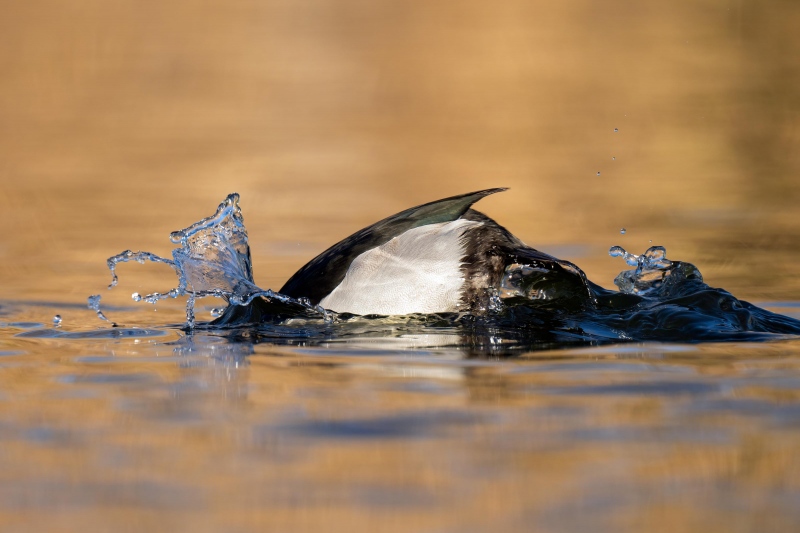
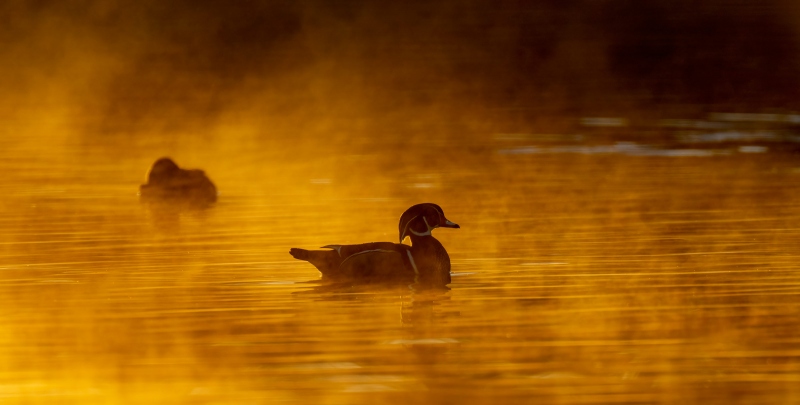
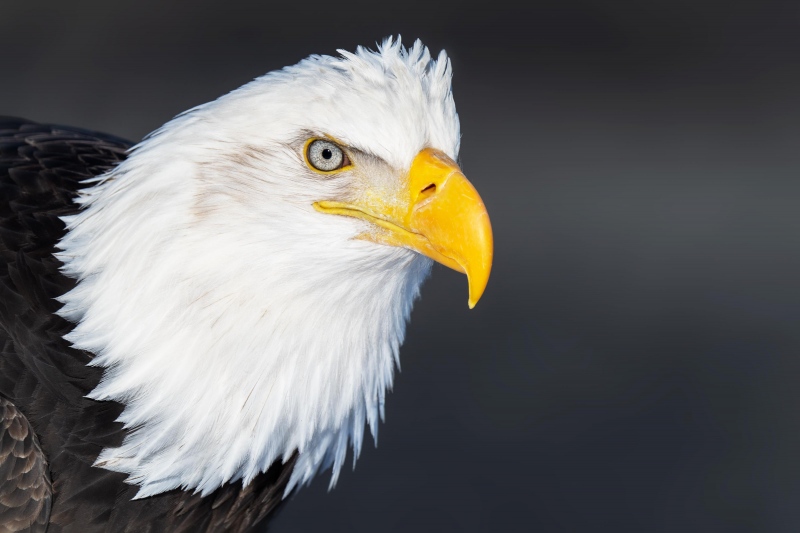
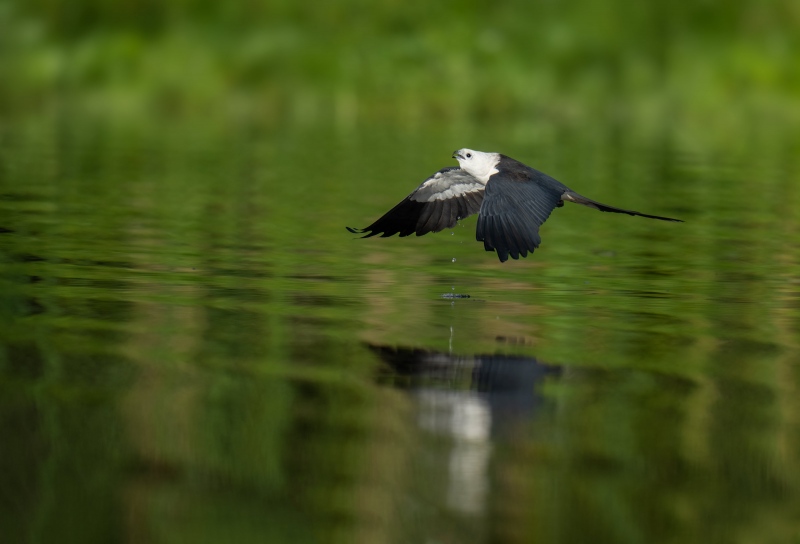
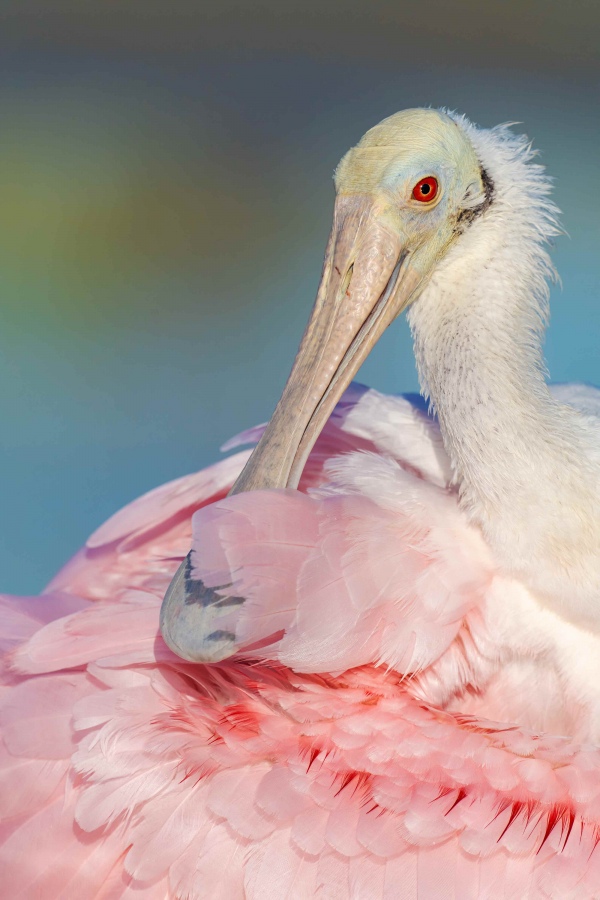
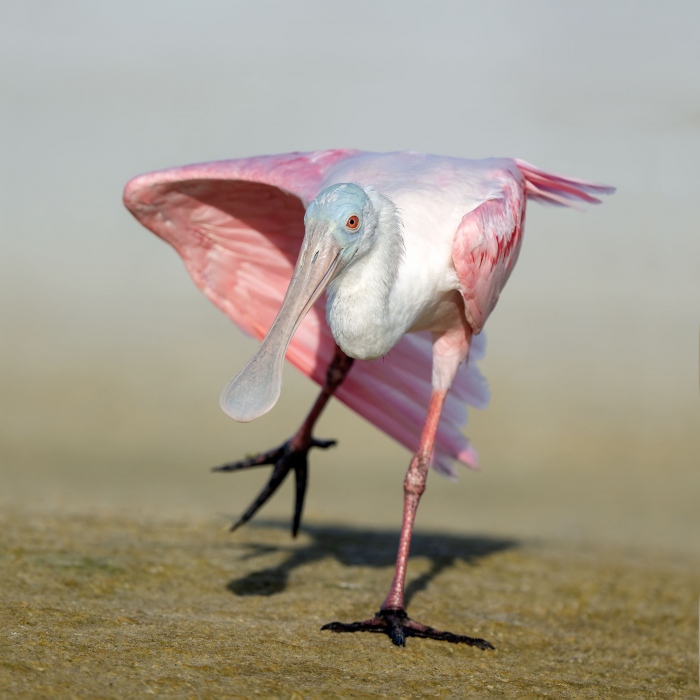















I agree with many posters that the eagle portrait and the spoonbill stretch are my two favorites. The white feather detail in the eagle is perfect. As to the spoonbill, I always like to observe/capture wildlife behavior to add interest to a shot.
#4 appears to need levelling up. The water seems to slope over to the right. The water droplets appear to be dropping ahead of the bird, which would be fine if the bird were flying in reverse, which I strongly suspect is not the case.
Thanks, Roger. You may be right. Re-examining the image it might need about 1/3° CCW rotation. It is difficult to tell as the vegetation on the left side of the frame (our left) dips into the water more than the rest of the vegetation. So I worked very large with the Ruler Tool on the droplets and the horizontal splash mark. Results ranged from 0 to 0.68° CCW. I found it impossible to be exact.
Which image was your favorite?
with love, artie
I will go with the image #2. It stands out from the rest. Has that magical touch of Art.
Thank you. For me, quite a few of them are very special.
with love, artie
Okay, it’s a contest and I choose #5 as the winner! Wonderful how the soft background colors are similar to the beautiful colors on the bird’s head. I also appreciate the lovely detail on the bird’s bill, head and feathers.
I did not like the “mist” picture at all because the duck was in the middle of the frame.
Thanks, Pat. I hear you. I struggled with the crop and at one point, eliminated the Ruddy Duck, but that put the Wood Duck more in the middle so I left it in.
with love, artie
Hi Artie, all nice images but my favorite is the spoonbill close up, beautiful colors and background. The bill tucked into the feathers preening make it special, also as you wrote a perfect angle.
Regarding the spoonbill in image #6… yes a foot lower would have eliminated the shadow but would the foot still show? I see so many images captured from a low POV that cut off the foot or feet. Maybe just me but I like the feet showing.
Thank you for sharing your images and knowledge.
Thanks, Joe. You misread what I wrote:
“I could have eliminated the shadow by getting about one foot lower.”
I could have gotten 12 inches lower 🙂 If I got to the exact right spot I could have seen the feet but not the shadow as the bird was on a small rise.
with love, artie
I prefer image #2 there is something magical about. I had to stop and look at images #1 for over a minute just to see if I was missing something since you posted it and I could find anything special about it to my eye. For me at least that frame would not have been a keeper (but we all see different things in an images) The Eagle came in a solid second for me.
Yes, different strokes for different photographers 🙂
Thanks for leaving a comment. And yes, fire in the mist conditions have great potential.
with love, artie
I like #2 best. The early sun on the mist is lovely. #s 3 & 4 rate very high too.
Thanks, Marr, for leaving a comment. Heck, I like all of them, that’s why they were on the blog.
with love, artie
It’s the Eagle portrait all the way for me.
Lighting is wonderful here. The Eagle’s leaning forward pose and intent look creates anticipation and are immediately impressive.
Technically the focus is perfect, detail in whites is there in spades which means exposure is also perfect. I also love the bokeh (and color of the background) because it compliments the subject rather than distracting from it.
What truly is awesome (to me) is the fine detail in the iris…..another clue that the focus is right.
Also, in general, what makes super tele portraits or head shots so special is that they reveal so many details you cannot appreciate with the naked eye. Could be my absolute favorite type of bird photograph and this one is killer.
Thanks, Doc. I agree, and don’t forget that it was created with the 200-600 and the 1.4X TC handheld!
with love, artie
Artie: I love all the images except #1, which looks too much like some of my mis-timed attempts to photograph diving birds. My favorite is #3, the eagle portrait. Classic, perfect, stunning. My second favorite is #6, the spoonbill stretching. Great composition and color. What’s not to like about the shadow??
Thanks, David. I love the diving duck splash 🙂 I agree on the wicked eagle shot. I liked the shadow, that’s why I kept it and did not get lower.
with love, artie
A lot of good stuff today. Of the lot, I prefer image #6 of the Roseate stretch. Simply fantastic in every respect; colors, pose, sense of movement, etc. As an aside, I have to thank Steve and the folks at Bedfords for coming through with an R7 body for me when the numbers around the country are few. It’s an interesting little APS-C camera for those who might be interested in WL/BIF and who don’t have deep pockets for a Z9, A1, R5/R3, etc.
Thanks, Adam. I like #6 but it was my least favorite of the three spoonbills in that post 🙂 Again, different strokes.
As for Steve and Bedfords, both are great.
with love, artie